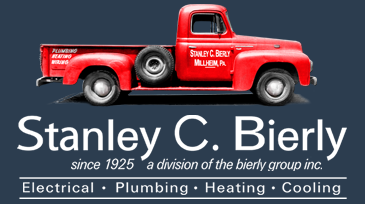Furnaces are often used as a general term for that thing in the basement that heats my house. A furnace is an appliance that heats and moves air. Appliances that heat water and use radiators are called boilers. Furnaces normally burn some type of Fossil Fuel Like Gas, Propane, Oil or even coal, pellet or wood. They all have the same thing in common that they have a blower that pushes air across a heat exchanger in the furnace and picks the heat up which warms the air and pushes it out the registers in your floor, walls or ceiling. Other than the different fuels, furnaces come in 2 different flavors… condensing and non-condensing.
A non-condensing furnace burns at about a 85% efficiency or lower and sends hot combustion gases up the flue so that they clear the chimney into the atmosphere. 85% efficiency means that 85% of the fuel is converted to heat and 15% of the combustion is sent up the flue and lost. The 15% sent up the flue is important to the operation of these furnaces as there is moisture chemicals and gases that are exhausted and these gases have to stay hot enough that they clear the chimney and that the moisture in the exhaust does not condense (or turn from vapor to actual water) on the inside of your chimney. If the water (which contains all sorts of nasty stuff) condenses inside the chimney it can run down the chimney as a liquid and corrode the inside of the chimney over time or corrode the furnace pipe or furnace heat exchanger if it makes it that far. Most Oil Furnaces are non-condensing furnaces. Condensing furnacesare designed to handle the corrosive moisture and gases in the exhaust. They are designed to extract the extra heat that would normally go up the chimney. Condensing Furnaces can achieve up to 98% efficiency! That means only 2% of the heat is escaping to the outside. Condensing furnaces usually have a secondary heat exchanger that is made out of a material that is designed not to corrode under the extreme conditions of the water vapor from the furnace combustion. Most Condensing furnaces are around 95% efficient and are typically gas or propane although there are a few oil furnaces that are available. Often condensing furnaces are vented with PVC pipe as the flue gases are below the 140F temperature that the PVC is rated for. Furnaces offer one of our favorite capabilities for heating a home and that is Dual Fuel. This is when you would use a heatpump to do heating during the mild weather and then use the furnace for the colder temperatures. The two systems work together as a team to save you money. They also allow you to set the switchover point when the system will go from heat pump to furnace heat. This allows you to set when to run either the furnace or the heatpump to get the lowest overall heating cost for your home or business. The nice thing with the heatpump option is that when your fossil fuel costs go up the heatpump can offset and minimize those price increases by doing the heating instead of the furnace. The heatpumps do air conditioning in the summer so it is a 2 for 1 deal! Check out our section on heatpumps or give us a call for more information about the furnaces and/or dual fuel systems. We install furnaces throughout Centre County including , State College, Millheim, Bellefonte, Port Matilda including other nearby towns that are not in Centre County such as Lewistown, Lewisburg, Loch Haven and elsewhere.



